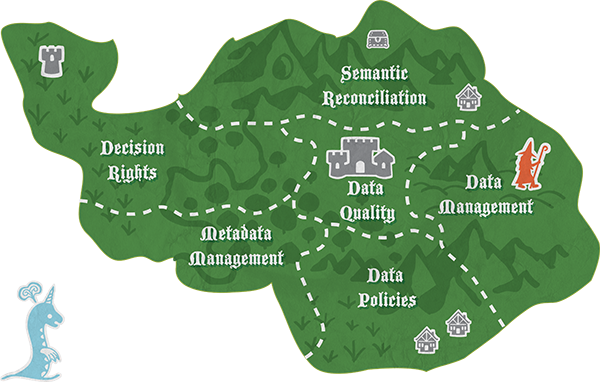“Data that is loved tends to survive.” – Kurt Bollacker, data scientist
Awhile back, I had the pleasure of traveling to five countries in Europe to participate in a 10-day, SAS-sponsored executive roadshow. Jill Dyché, Vice President of SAS Best Practices, kicked off each event with a discussion on data governance, data management and treating data as a corporate asset. I then spoke about big data and going beyond the 3Vs, similar in concept to this blog series. After each event, we then had the opportunity to talk with SAS customers about their data governance and big data issues.
It is clear that data governance and data management continue to be important discussions – especially with big data on the scene. This was evident in Europe. While many companies have already developed (or are developing) an enterprise-scale data governance program, there’s some who still don’t understand its significance and/or are simply afraid to have the discussion. For those who do get it, though, they’re beginning to ask the question, “What do data governance and management look like for big data?”

A Big Data Best Practice for Data Governance
One casual observation I made on my trip is that Europeans, unlike their US counterparts, seem more cautious about jumping into one-off, sandbox-type, big data projects. They seem more interested in having the data governance and management discussion up front, or at least while they’re going along. In the US, a more common approach is to wrestle with big data first, then figure out how to govern and manage it later on – if the project proves successful. Perhaps there’s a happy medium.
Given that we’re still in the emerging phase of big data, the approach we’re recommending is to tackle data governance one big data project at a time. Determine which components of data governance – i.e., decision-making bodies, workflow, decision rights, data quality, and rules of engagement, to name a few – make sense for each big data project. Not all governance components will apply and that’s okay.
After you have a few big data projects under your belt, you should have a solid data governance framework that supports all data, big and small. In other words, you won’t need to develop a framework specifically for big data governance.
A Best Practice Checklist for Data Governance
Where does your company stand when it comes to data governance? Do you have a framework in place? If you’re just getting started, here’s a few quick practices we recommend:
- Define what data governance means—to your company and to your project.
- Know your culture. One size does not fit all. Some organizations are better suited for a top-down approach, while others will work better from the bottom up.
- Design your data governance framework. Identify the “what” and “how” before specifying the “who.” Leverage existing committees and processes.
- Treat data governance as a long-term program. Implement it as a series of tightly-scoped initiatives. Plan for the activities and resources required to execute and maintain governance policies.
Organizations that already embrace centralized or shared services that integrate with functional business processes will have a less difficult path than those starting from scratch. However, the effort to establish meaningful and sustainable data governance and management will still:
- Require a business context considered relevant and valuable to the end users;
- Make mistakes that may require multiple attempts before results are sustained; and
- Depend on a determined commitment to achieve the vision of data as a corporate asset and a willingness to learn from mistakes and try again.
As I mentioned earlier, when it comes to big data, you don’t need to develop a separate data governance program or framework. You just need a data governance program and framework that supports big data. Yes, I know. Easier said than done.
Key Takeaways for Marketers
- If you’re ever in Europe, go medieval and visit a SAS castle.
- Coordinate your island schedule with other members on the data governance team. Solo trips are not allowed.
- Don’t skip corners with “big” data. It’s all data. It needs to be governed along with the rest of your data.
- Visit the chalets on the South Shore of the island. They have hot tubs, practically bubbling over with new insights.
- Don’t be afraid to fail. Big data is new. We’re all learning, and the opportunities usually outweigh the challenges.
This is the 6th post in a 10-post series, “A marketer’s journey through the Big Data Archipelago.” This series explores 10 key best practices for big data and why marketers should care. Our next stop is the Data Security Isle, where we’ll talk about treating data as a corporate asset.


3 Comments
Pingback: Stop #6 in the Big Data Archipelago Journey: The Data Governance Isle | The Cyberista Says
Pingback: The final stop in the Big Data Archipelago journey: the Strategy Isle - Customer Analytics
Pingback: The Final Stop in the Big Data Archipelago Journey: The Strategy Isle | The Cyberista Says